| Gemstone Chart |
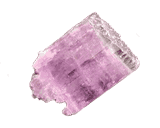 Natural Kunzite Natural Kunzite
Kunzite is the pink to light purple gem variety of the mineral Spodumene.Although kunzite is a relatively soft and delicate gem, and can fade after prolonged exposure to light, its appealing color makes it a popular gem. Small gems are seldom cut from kunzite because of its cleavage and strong pleochroism. It is rarely seen in rings, necklaces, or any other forms of jewelry where small stones are required.
Color: Pink, Lilac, Light Violet
Categories: semi-precious stone
Chemical Composition: LiAlSi2O6
Crystal Group: Monoclinic
Refractive Index: 1.660 - 1.675
Hardness: 7
Density: 3.17 - 3.19
Occurrence: Africa, Brazil, Canada, Madagascar, Mexico, Myanmar, Afghanistan, Sweden, and USA (California).
| 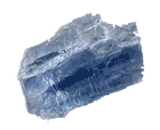 Natural Kyanite Natural Kyanite
Kyanite is a calming stone. It helps to quiet the mind, dissolving emotional, mental, or spiritual confusion, and letting go of anxiety.
Color: Blue, Greenish Blue.
Categories: semi-precious stone
Chemical Composition: AL2SIO5
Crystal Group: Triclinic
Refractive Index: 1.716 ¨C 1.731
Hardness: 4.5 ¨C 7.0
Density: 3.56 ¨C 3.68
Occurrence: Kenya, Nepal, India, Burma,U.S.A.
| 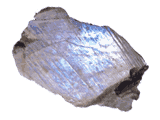 Natural Moonstone Natural Moonstone
The most common moonstone is of the mineral adularia.It is an opaque stone, a simi-clear white, kind of the color of watered down milk.Moonstone Jewellery uses the gemstone moonstone as its main stone.
Color: white, blueish white.
Categories: semi-precious stone
Chemical Composition: KalSI3O8
Crystal Group: Monoclinic
Refractive Index: 1.518 ¨C 1.526
Hardness: 6 ¨C 6.50
Density: 2.55 ¨C 2.57
Occurrence: Sri Lanka, India, Madagascar, Burma, Tanzania, U.S.A.
| 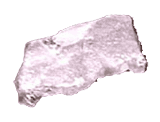 Natural Oligoclase Natural Oligoclase
Oligoclase is a rock-forming mineral belonging to the plagioclase feldspars. Oligoclase is famous for its two gem varieties: Sunstone and Moonstone.
Color: green, orange, red, colorless
Categories: semi-precious stone
Chemical Composition: [Na,Ca]AlSi3O8
Crystal Group: Triclinic
Refractive Index: 1.53 - 1.54
Hardness: 6 - 6.5
Density: 2.62 - 2.65
Occurrence: Tvedestrand and Hitero on the south coast of Norway; near Lake Baikal Russia; Ontario, Canada; Tanzania; Kangayam, southern India; France; and in Maine, New Mexico, New York, North Carolina, Pennsylvania, Virginia and Oregon in the USA.
| 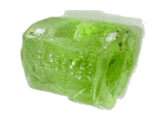 Natural Peridot Natural Peridot
Peridot is the best known gem variety of olivine, a species name for a series of magnesium-iron rich silicate minerals.It is one of the prettiest of all green gems.Most peridot formed deep inside the earth and was brought to the surface by volcanoes. Some has also come to Earth in meteorites, but this extraterrestrial peridot is extremely rare, and you're not likely to see it in a retail jewelry store.
Color: Green, olive.
Categories: semi-precious stone
Chemical Composition: (Mg,Fe)2(SiO)4
Crystal Group: Orthorhombic
Refractive Index: 1.654-1.689
Hardness: 6.5
Density: 3.34
Occurrence: China, Burma, East Africa, U.S.A., and Vietnam
| 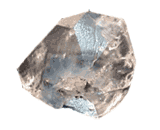 Natural Phenakite Natural Phenakite
phenakite is a fairly rare nesosilicate mineral consisting of beryllium orthosilicate, It is one of the brightest of the colorless gemstones.Madagascar seems to be the most important source for this rare stone.
Color: White
Categories: semi-precious stone
Chemical Composition: Be2SiO4
Crystal Group: Hexagonal
Refractive Index: 1.651-1.696
Hardness: 7.5-8.0
Density: 2.94--2.96
Occurrence: Russia, Madagascar, U.S.A., Brazil, France, Switzerland, Ceylon, E. Africa.
| 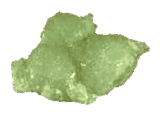 Natural Prehnite Natural Prehnite
Prehnite is a hydrated calcium aluminum silicate that occurs in a soft yellow-green to apple-green color.It was a rare gemstone, most prehnite is translucent but transparent specimens are sometimes found.While you are unlikely to find it in your local jewelry store, gemstone dealers often have some supply. Deposits are found in South Africa, Australia, China, Scotland and the United States.
Color: yellow green, brown, yellow brown, oil green
Categories: semi-precious stone
Chemical Composition: (CA2Al2SI3O10(OH)2)
Crystal Group: Orthorhombic
Refractive Index: 1.61 - 1.64
Hardness: 6
Density: 2.80 - 2.95
Occurrence: China, France, U.S.A., Scotland, Australia
| 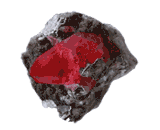 Natural Rhodochrosite Natural Rhodochrosite
Rhodochrosite is a manganese carbonate mineral with chemical composition MnCO3. The pink color of rhodochrosite is caused by the element manganese and it is formed when manganese is dissolved by ground water and combines with a carbonate material and then drips off the ceiling of caves and crevices deep underground.Rhodochrosite often forms pink and white bands. It is often carved into figurines or boxes while the tubular stalactite formations are often sliced for use in jewelry. Fine gem quality crystals are sometimes cut into gemstones for use in high end jewelry, but the more common grade is used extensively in silver and gold jewelry.
Color: Rose red, raspberry red, pink, grey, fawn, brown
Categories: semi-precious stone
Chemical Composition: MnCO3
Crystal Group: Trigonal
Refractive Index: 1.600 ¨C 1.820
Hardness: 4
Density: 3.45 ¨C 3.70
Occurrence: Argentina; Colorado, U.S.A.; Romania; Hungary; India; South Africa; Saxony, Chile; Peru; Mexico.
|
|
